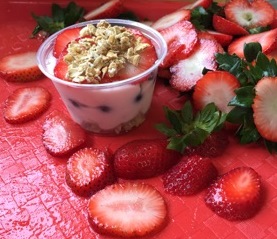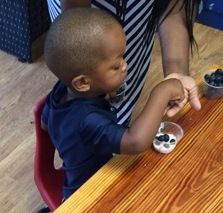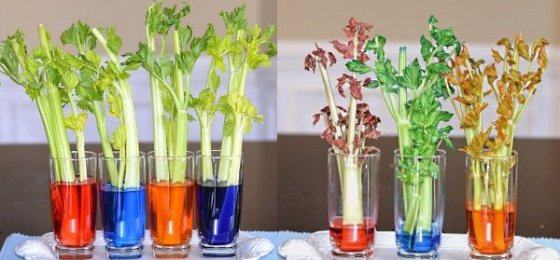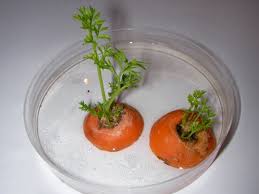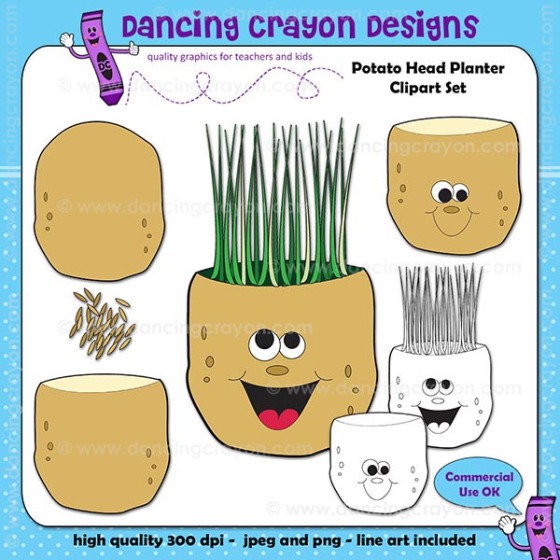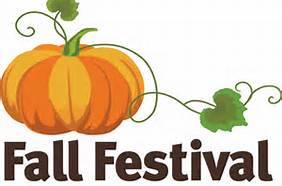What better way to celebrate National Farm to School Month than to introduce children to some new fruits and vegetables. Food can be incorporated into every area in your center and can be such fun!! When you begin to explore books that focus on foods, healthy eating, gardening, and planting the number available is quite large. So here a few and some activities to get you started. Use your imagination, make the books come alive, sample new foods and add activities during the month to get your children excited about healthy eating. When they are more involved with the activities they are more likely to try new foods.

Eating the Alphabet by Lois Ehlert
This book is great for the introduction of new foods by reading your way through the alphabetical world of fruits and vegetables. Currents, jalapeno peppers, parsnips, star fruit, ugil fruit, and yams are just a few of the foods mentioned. There is also a glossary of the fruits and vegetables described in the book.

Growing Vegetable Soup by Lois Ehlert
This bright, bold picture book is about vegetable gardening for the very young. The story starts off “Dad says we are going to grow vegetable soup”. The necessary tools are pictured and labeled, as are the seeds (green bean, pea, corn, zucchini squash, and carrot). Then the real gardening happens . . . planting, weeding, harvesting, washing, chopping, and cooking! In the end? “It was the best soup ever.” A recipe for vegetable soup tops it all off! After reading the book serving vegetable soup would be a great way of adding vegetables to your children’s diet. I would also suggest to share a recipe with your parents and encourage them to try this at home. Parent buy-in is very important and can extend classroom learning. They may also try something new too!
Recipe Corner
Sometimes children will try a new food when they can dip it. My goddaughter is happy to eat anything if there is something to dip it into. I think it is the experience of it all. So if they are a little hesitate to taste a new vegetable or fruit these healthy dips may be a way to encourage the new food experience.
Ranch Sauce*
- 1 cup plain low fat yogurt

- 1/2 cup light ranch salad dressing
Combine ingredients in a small bowl. Serve with any cut vegetables.
Cinnamon Dip*
- 1/2 cup plain nonfat yogurt
- 1 teaspoon brown sugar
- dash of cinnamon
- Place yogurt in small (1 cup) bowl.
- Add brown sugar & dash of cinnamon to yogurt.
- Stir until well mixed.
- Cover & refrigerate until ready to serve.
- Serve with your favorite fruits, such as apple wedges, banana slices, strawberries, peaches or other fruit.
Fruity Parfaits*
- 1/2 cup lightly sweetened cereal, such as Life or granola
- 6 oz. vanilla low-fat yogurt
- 1/2 cup berries or cut-up fruit (drain if canned)
- 2 Tablespoons chopped pecans (check for any food allergies before using nuts
- Place cereal in small bowl or cereal dish.
- Add yogurt. Spread evenly over cereal.
- Rinse fruit or drain if canned. Sprinkle fruit evenly over yogurt.
- Sprinkle chopped pecans evenly over fruit. Serve.
*Recipes are courtesy of the Georgia Expanded Food and Nutrition Education Program (EFNEP). To find out if this free nutrition program is available in your area contact your local county Extension or in Georgia 1.800.ASK.UGA1 or visit http://www.fcs.uga.edu/extension/efnep.
See upcoming blogs for more ideas for adding fruits and veggies.
